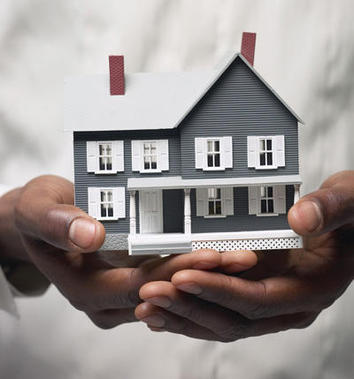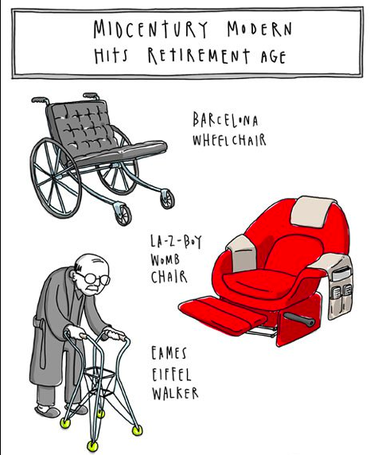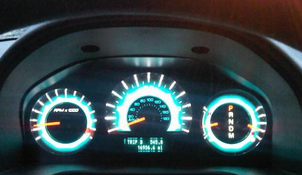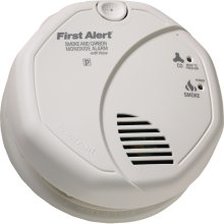
It can start with simple basics such as adding an easy-to-operate wireless security system that makes it economical for people of all abilities and income level to protect their environment from unexpected entry,.. often less than $100.00. While it can be connected to call an alarm company ( for a fee ) many systems can be programmed to call pre-assigned numbers including a caregiver or perhaps the baby boomer child of an elder parent.
In what other ways can technology provide a measure of security and peace of mind? Here are a few creative ideas that can keep everyone just a bit safer.
• Adding a wireless door bell system that can be installed and heard in a main bedroom or master bath helps someone who might be spending time in those spaces to know when a guest is at the door. And place a doorbell switch at all entries into the home, not just the main front door.
• Consider purchasing timers to operate lamps in an unused bedroom and perhaps in a den or other space to make it appear there are other people at home. Have the the timers activate at various and random times in the evening, during the night and into the twilight of the morning. Several inexpensive timers easy to set can be programmed to come on over a 24 hour period and at differing intervals to making less a target by unsavory individuals. The Stanley 38425 TimerMax Digislim sells for about $13 for a pack of two.
• Add a wireless and waterproof telephone in the bathroom so that should an emergency occur, a call for help is easy to make. Make sure the phone has speed dialing as a feature. Then pre-program the phone buttons with a call to 911 plus a second ( and third ) speed call button to a family members or caregivers. And to make it even easier, use fingernail polish as a visual cue to highlight what buttons to push. Then decide the best location and then rehearse how to make the call for help.
• Motion-activiated LED puck lights that operate on batteries can illuminate the path to a bath, down a hall or accentuate the steps. A set runs less than $100. and makes a great investment. use them also near doorways where there might be a small step or tall threshold.
• The leading cause of accidental poisoning deaths in North America, Carbon Monoxide (CO) is odorless, tasteless and invisible – it’s a silent killer. The only safe way to know if carbon monoxide is present is to install CO detectors (alarms) on every level of a home and in sleeping areas. They can be purchased for as little as $25.00 but can make the difference between life and death.
• Grab bars - or what we should be calling balance bars - are an important necessity for many. But while many boomer and their parents frequently reject their use because it brings to mind an institutional or hospital environment, great looking ones can keep the most dangerous place in the home -the bathroom- a safer place. But grabs bars also can be great looking like those from greatgrabz.com including teak wood, acrylic and a variety of metal finishes complimentary to the plumbing fixtures like polished brass and oil-rubbed bronze. A new one glows in the dark making it easy to see and reach out for.
• A new product from Schlage called the Link Wireless Keypad Deadbolt is a great example of the use of technology. The lock can be operated by key or by keypad with the use of a code. Better yet, when connected to the Internet, the lock can be operated remotely using a computer or a cell phone and even send an email should it detect activity. It sells for $300 plus installation.
• How about a surveillance camera that is connected to the Internet would allow friends or family to "check-in" on a loved one to ensure they are going about their normal daily routines. Logitech's Alert Line of Internet-connected cameras will also record images whenever there is movement in its field of vision.
• Consider a secondary front porch light that will flash at regular intervals to alert emergency workers and direct them more quickly to a location. With so many homes looking alike and house numbers too small or not easily seen from the street, then a flashing light will give the visual cue when time is of the essence.
• And finally, it won’t be long before our cars “talk” to each other, keeping tabs on everything around us and alerting us to threats we aren’t aware of. But what about homes? Using a computer and a set of X-10 wireless control units can informally monitor an individual's ADLs or activities of daily living. It would require one to go thru a simple routine such as checkin emails by 10 am everyday or turn off a light in a hall way by bedtime. When there is an exception to that routine, a pre-recorded voice would announce to the resident of such required activity and ask for a response by going back to the computer and "checking-in." Without "checking-in" in a pre-determined time, a call or text message is sent to someone so that a "live check" on the loved one can be made.
If you have other creative uses of technology in order to provide safe and secure independency at home, please share them here by adding a comment.




 RSS Feed
RSS Feed
